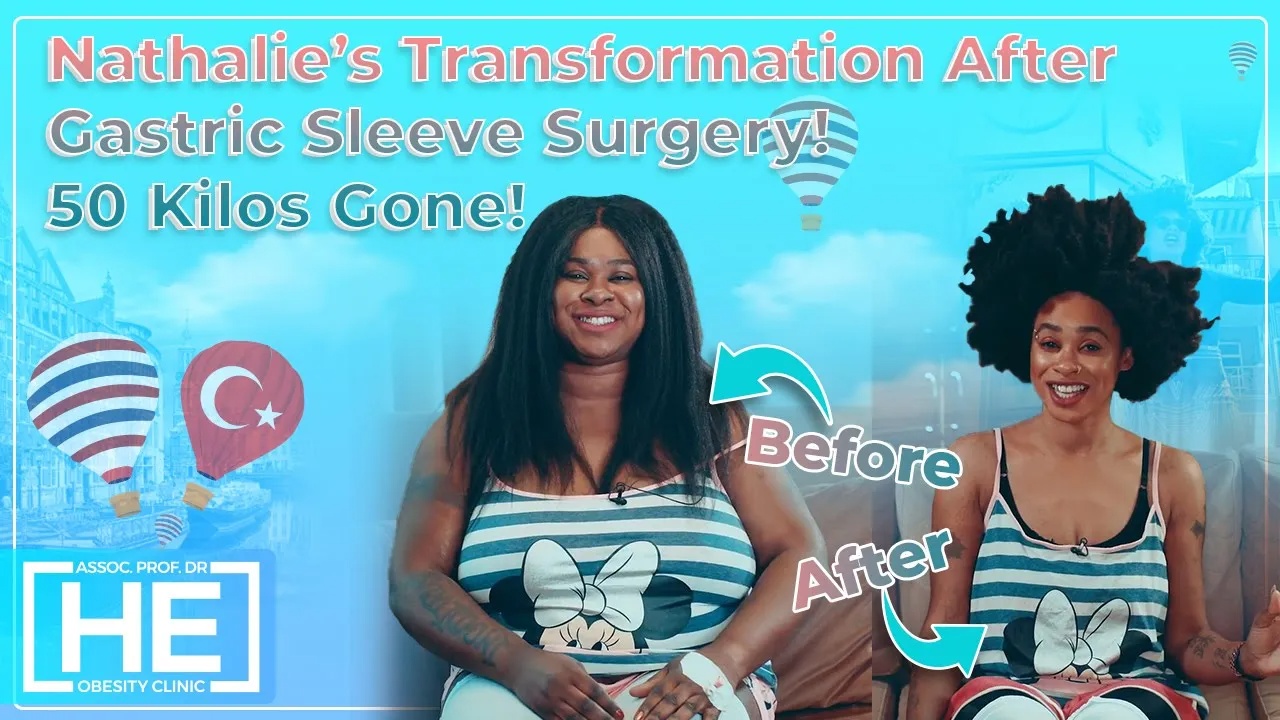Pictures of Gastric Sleeve Surgery Scars
Pictures of gastric sleeve surgery scars; Gastric sleeve surgery, also known as sleeve gastrectomy, is a surgical procedure that involves the removal of a large portion of the stomach, resulting in a smaller, sleeve-shaped stomach. This procedure is often performed on individuals who are severely obese and have been unable to lose weight through diet and exercise alone.
After undergoing gastric sleeve surgery, patients can expect to have several small incisions on their abdomen, where the surgeon inserted the laparoscopic instruments during the procedure. These incisions are typically small and may be closed with dissolvable stitches or surgical tape.
As the incisions heal, patients may notice that they develop scars at the site of the incisions. These scars are a normal part of the healing process and are generally small and discreet. Over time, the scars may fade and become less noticeable. It's important to follow your surgeon's post-operative care instructions to ensure proper healing of the incisions and minimize the appearance of scars. This may include keeping the incision sites clean and dry, avoiding activities that could put strain on the incisions, and attending follow-up appointments with your surgeon.
In some cases, patients may be concerned about the appearance of their scars following gastric sleeve surgery. It's important to keep in mind that each person's body heals differently, and while some individuals may experience minimal scarring, others may develop more noticeable scars.
There are several options available for managing the appearance of scars following gastric sleeve surgery. These may include topical treatments such as silicone gel or sheets, which can help to soften and flatten scars. In some cases, laser therapy or other cosmetic procedures may be recommended to improve the appearance of scars. It's important to discuss any concerns about scarring with your surgeon, who can provide guidance on the best approach for managing scars following gastric sleeve surgery. Additionally, seeking support from other individuals who have undergone similar procedures can provide valuable insight and reassurance.
While it's normal to experience some scarring following gastric sleeve surgery, there are options available for managing and minimizing the appearance of scars. By following your surgeon's post-operative care instructions and seeking guidance on scar management, you can help to ensure optimal healing and a positive outcome following gastric sleeve surgery.
Common locations of scars after gastric sleeve surgery
In most cases of gastric sleeve surgery, the surgeon makes multiple small incisions in the abdomen. These incisions allow the surgeon to insert the laparoscope and other surgical instruments. The exact number and placement of the incisions can vary, but usually, they are spread out across the upper abdomen.
Each incision made during the procedure will result in a scar. Therefore, most patients end up with multiple small scars across their abdomen following the surgery. Although these scars may initially be quite noticeable, they often fade and become less visible over time.
Again, it's important to note that the location and appearance of scars can vary significantly between individuals. Your surgeon will be able to provide you with specific information regarding where your scars are likely to be and what they could look like.
Types of scars after gastric sleeve surgery
The types of scars that may develop after gastric sleeve surgery are typically classified based on their appearance and characteristics. The most common types of scars include keloid scars, hypertrophic scars, and atrophic scars.
Keloid scars are characterized by an overgrowth of tissue at the site of a healed skin injury. They are often raised, thick, and puffy. Hypertrophic scars, on the other hand, are red and raised, but unlike keloids, they do not grow beyond the boundaries of the original wound. Finally, atrophic scars are sunken or depressed due to the underlying support structures, such as fat or muscle, being lost.
The type of scar you develop will depend on various factors, including your genetic predisposition, the location and depth of the wound, and how well your wound heals.
How to care for gastric sleeve surgery scars?
Taking care of your scars post-surgery is crucial in promoting healing and reducing their long-term visibility. Your healthcare provider will give you specific instructions on how to care for your wounds immediately following surgery. This may include keeping the area clean, avoiding certain activities, and monitoring for signs of infection.
As your scars begin to heal, it's important to protect them from the sun, as UV rays can darken the scars, making them more noticeable. Using sunscreen, wearing protective clothing, and avoiding peak sun hours can help prevent this.
Moreover, massaging the scars can also be beneficial. Massage can help to break down scar tissue and promote flexibility. However, always consult with your healthcare provider before beginning any new treatments.
Minimizing the appearance of scars after gastric sleeve surgery
While it's not possible to completely remove a scar, there are numerous strategies that can help minimise its appearance. These can range from simple home remedies to more advanced medical treatments.
For instance, silicone sheets or gels have been shown to be effective in reducing the size, colour, and texture of scars. They work by hydrating the scar and regulating collagen production. Other topical treatments such as vitamin E oil and onion extract may also be helpful.
For more prominent or bothersome scars, medical treatments are available. These include laser therapy, which uses focused light to remove or reshape scar tissue, and steroid injections, which can help to flatten raised scars and reduce inflammation. Again, it's crucial to consult with a healthcare provider before starting any new treatments.
Before and after photos of gastric sleeve surgery scars
Looking at before and after photos can give you a realistic idea of what to expect in terms of scarring from gastric sleeve surgery. It can also provide reassurance to see the progression of scar healing over time. Many healthcare providers offer these photos, and there are also numerous online resources available.
However, remember that every individual is unique, and your scars may not look exactly like those in the photos. It's also important to note that these photos are usually taken several months to a year after surgery, as scars continue to fade and improve for up to a year or more post-surgery.
Tips for emotional healing after gastric sleeve surgery
While physical healing is a significant part of the recovery process, it's also important to take care of your emotional health. Having surgery can be a stressful experience, and living with scars can sometimes impact your self-esteem and body image.
It's essential to be patient with yourself and remember that healing takes time. Try to focus on the positive outcomes of the surgery, such as improved health and well-being, rather than just the aesthetic changes. If you're struggling with your emotions post-surgery, don't hesitate to seek help from a mental health professional.
Support groups and resources for individuals with gastric sleeve surgery scars
Lastly, remember that you're not alone. There are numerous support groups and resources available for individuals who have undergone gastric sleeve surgery. These can provide a safe space to share experiences, ask questions, and receive emotional support.
Online platforms, such as weight loss surgery forums and social media groups, can be particularly helpful. Additionally, many hospitals and clinics offer post-surgery support groups. Your healthcare provider should be able to provide information on these.
Do Gastric Sleeve Scars Go Away?
Gastric sleeve surgery, also known as sleeve gastrectomy scars, is a popular weight loss procedure that involves the removal of a large portion of the stomach, resulting in a smaller, sleeve-shaped stomach. Like any surgical procedure, gastric sleeve surgery leaves scars, which can be a concern for many patients.
The short answer is that gastric sleeve scars do not completely go away, but they do fade over time. Like any surgical incision, the scars from gastric sleeve surgery will initially appear red and raised, but they will gradually flatten and lighten in color as they heal. In most cases, gastric sleeve scars will continue to improve for up to 18 months after surgery.
Factors Affecting Gastric Sleeve Scars
Several factors can influence the appearance of gastric sleeve scars, including:
1. Genetics: Some individuals are more prone to developing noticeable scars due to their genetic makeup. If you have a history of keloid or hypertrophic scarring in your family, you may be at a higher risk of developing raised or discolored scars after gastric sleeve surgery.
2. Skin type: The natural pigmentation and thickness of your skin can impact how your scars heal. Individuals with darker skin tones may experience hyperpigmentation or hypopigmentation around their scars, making them more noticeable.
3. Surgical technique: The skill and precision of your surgeon can play a significant role in how well your scars heal. A skilled surgeon will make incisions with care and attention to minimize scarring.
4. Post-operative care: Following your surgeon's post-operative care instructions is crucial for optimal scar healing. Proper wound care, avoiding sun exposure, and maintaining a healthy lifestyle can all contribute to better scar outcomes.
Treatment Options for Gastric Sleeve Scars
While gastric sleeve scars will naturally improve over time, there are also treatment options available to help minimize their appearance:
1. Scar creams and gels: Over-the-counter scar treatments containing ingredients such as silicone, vitamin E, and onion extract can help soften and flatten scars. These products should be used as directed and may take several months to show results.
2. Laser therapy: Laser treatments can help reduce the redness and texture of scars by stimulating collagen production and promoting skin regeneration. Multiple sessions may be required for optimal results.
3. Steroid injections: For raised or hypertrophic scars, corticosteroid injections can help flatten and soften the scar tissue. This treatment is typically performed by a dermatologist and may require multiple sessions.
4. Surgical revision: In some cases, surgical scar revision may be considered to improve the appearance of prominent gastric sleeve scars. This involves removing the existing scar tissue and creating a new, less noticeable scar.
It's important to note that not all scar treatments are suitable for everyone, and you should consult with a healthcare professional to determine the best approach for your individual case.
Embracing Your Scars
While it's natural to desire minimal scarring after surgery, it's essential to remember that scars are a normal part of the healing process. Instead of viewing scars as flaws, many individuals find empowerment in embracing their surgical scars as symbols of strength and resilience. Additionally, sharing your scar journey with others can inspire and support those who may be facing similar experiences.
Gastric sleeve scars do not completely disappear, but they do fade and become less noticeable over time. By understanding the factors that influence scar healing and exploring available treatment options, individuals can take proactive steps to minimize the appearance of their scars. Ultimately, embracing your scars as part of your unique journey towards improved health and well-being can foster a positive mindset and self-acceptance.
What do VSG scars look like?
VSG, or Vertical Sleeve Gastrectomy, is a type of weight loss surgery that involves removing a large portion of the stomach, leaving a smaller, sleeve-shaped stomach. As with any surgical procedure, VSG leaves scars, and it's natural for patients to wonder what these scars will look like.
VSG scars typically appear as small, thin lines on the abdomen, where the incisions were made during the surgery. The number of scars can vary depending on the surgical technique used and the individual patient's anatomy. In most cases, there are usually 3-5 small scars, each measuring about 1-2 inches in length.
The appearance of VSG scars can also be influenced by factors such as skin type, age, and the body's natural healing process. In general, VSG scars tend to fade over time and become less noticeable, especially when proper scar care is followed. Immediately after surgery, VSG scars may appear red or pink and slightly raised. This is a normal part of the healing process and is due to the body's natural response to tissue injury. Over the following months, the scars will gradually flatten and lighten in color, eventually blending in with the surrounding skin.
It's important to note that while VSG scars will never completely disappear, they will continue to improve in appearance over time. With proper care and attention, many patients find that their scars become barely noticeable within a year or two of surgery. To help minimize the appearance of VSG scars, patients can take several proactive steps during the healing process. Keeping the incision sites clean and dry, protecting them from sun exposure, and using scar-reducing creams or silicone sheets are all common methods for promoting optimal scar healing.
In addition to physical care, it's also important for patients to address any emotional concerns they may have about their VSG scars. It's normal to feel self-conscious about any changes to your body, and seeking support from friends, family, or a mental health professional can be helpful in managing these feelings.
Ultimately, while VSG scars are a natural and expected outcome of the surgery, they are a small price to pay for the life-changing benefits that weight loss surgery can provide. For many patients, the physical and emotional improvements that come with significant weight loss far outweigh any concerns about scarring.
VSG scars typically appear as small, thin lines on the abdomen and will continue to improve in appearance over time. By following proper scar care techniques and addressing any emotional concerns, patients can feel confident in their bodies as they enjoy the many benefits of weight loss surgery.















COMMENTS FROM REAL PATIENTS
“An exceptional experience from start to end! Prof H. Erdem, doctors,nurses,nutritionists, dieticians, co-ordinaters and all the rest of the staff are simply amazing. They attend patients with patience and give attention to every query they have.Their lovely smiles and warmth was more then enough to make my stay an exceptional one. Now I look forward to the weightloss journey with their professional guidance. Heartfelt thanks to all! Will surely recommend.”
Posted on
Trustpilot“Very good before and aftercare. Lots of pre and post op information and support. Team were responsive to any issues that arose and made me feel safe. Each day that I was in hospital the team came to check on me (sometimes 3 times in a day), in addition to the core checks by the nurses. Pre and post op I was put in a WhatsApp group with the surgical team for additional and personal support. There was also a group for other post surgery people to support and uplift each other. Dr Hasan and team gave me such care that without reservation I give my recommendation. Even now 3 years later, I'm still having messages of support and encouragement from the patient liaison Tugce.”
Posted on
Trustpilot“I have just returned from having a gastric sleeve. I cannot fault the care and service I've had from the whole team at Dr. HE obesity clinic. I was given all the information I needed before I went and all my questions were answered, no matter what time I messaged. When I arrived at the hospital everyone was so friendly and caring. The hospital was clean and hygienic. My room was cleaned every day while I was there. I felt listened too and cared for throughout my stay. Everyone is so helpful. Another positive is they are there for you when you return back to the UK, to answer any questions you may have and support you when needed. Excellent service all round.”
Posted on
Google"After struggling with my weight for years, I decided to try the Allurion Balloon at GST Clinic in Turkey. The cost was much more affordable than back home, and the care I received was top-notch. From the moment I arrived, the team made me feel comfortable and informed. Three months later, I've lost a significant amount of weight and feel fantastic. I highly recommend the Allurion Gastric Balloon treatment here!"
Posted on
Google"I had my Allurion Gastric Balloon placed at GST Clinic, and it was the best decision I ever made. The procedure was quick, and there was no downtime. The staff were incredibly supportive, providing me with all the guidance I needed for a successful treatment. The cost was transparent, and there were no hidden fees. It’s been a life-changing experience!"
Posted on
Google"Choosing the Allurion Balloon from GST Clinic was a pivotal moment in my weight loss journey. The cost of the Allurion Balloon in Turkey was reasonable, and the service at the clinic was exceptional. They provided a comprehensive package that included follow-up care and nutritional advice, which really helped me make the most out of the 16 weeks with the balloon."
Posted on
Trustpilot"The Allurion Balloon cost in Turkey at GST Clinic was worth every penny. The team not only helped me with the medical procedure but also supported me emotionally throughout my journey. Losing weight has never felt this manageable, and I have GST Clinic to thank for this new lease on life."
Posted on
star"My experience with the Allurion Balloon at GST Clinic was nothing short of amazing. The staff were professional and caring, and the price of the treatment was clear from the start. The balloon helped me control my eating habits, and I saw results faster than I anticipated. I would definitely recommend GST Clinic to anyone considering the Allurion Balloon in Turkey."
Posted on
Trustpilot